#WomenRun2016: U.S. House Outlook
What will the U.S. House of Representatives look like in 2017? Combining CAWP data with race ratings from the Cook Political Report reveals that women may well reach a new high in numerical representation in the 115th House, but that outcome relies upon favorable breaks in the most competitive races. Moreover, the most positive outcomes in 2016 are likely to come for Democratic women candidates, who are best situated to take new seats, while Republican women are likely to see a net loss in their ranks.
Candidates and Nominees
Two hundred and seventy two (176D, 96R) women filed to run for the U.S. House of Representatives in 2016. The record for women House candidates was set in 2012, with 298 women (190D, 108R) filing. This year, 167 women (120D, 47R) have won their primaries, just barely setting a new record for women House nominees. The previous record was set in 2012, with 166 women (118D, 48R) making it through their party primaries.
Total Women Candidates Filed for U.S. House, 1992-2016
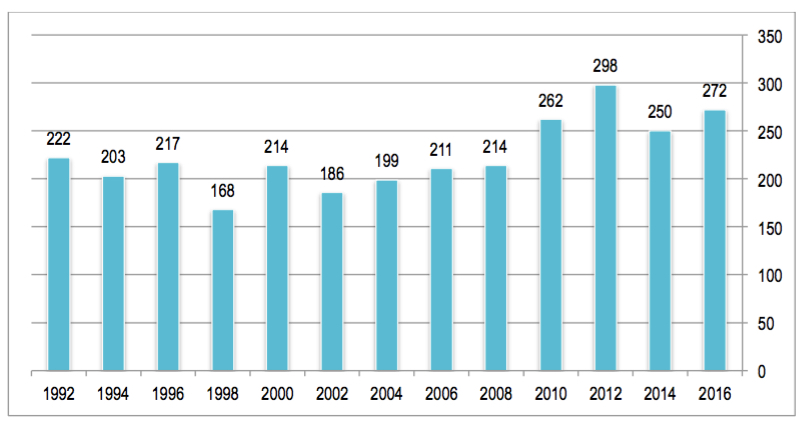
Total Women Nominees and Winners for U.S. House, 1976-2016
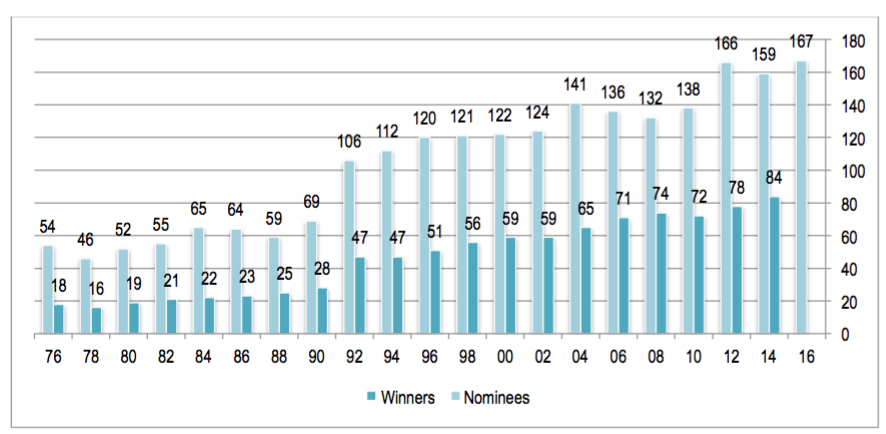
It’s important to look at the types of contests in which women are running to determine their likelihood of winning. In 2016, 19 (14D, 5R) women are nominees for open U.S. House seats, compared to the record high of 39 (26D, 13R) women running for open seats in 2012. As the charts below show, women have fallen short of making history as open seat nominees in either major party this year. Democrats have broken one record this year, exceeding the previous high of 118 total nominees for the U.S. House (set in 2012) by two.
Total Women Nominees for Open U.S. House Seats, 1976-2016
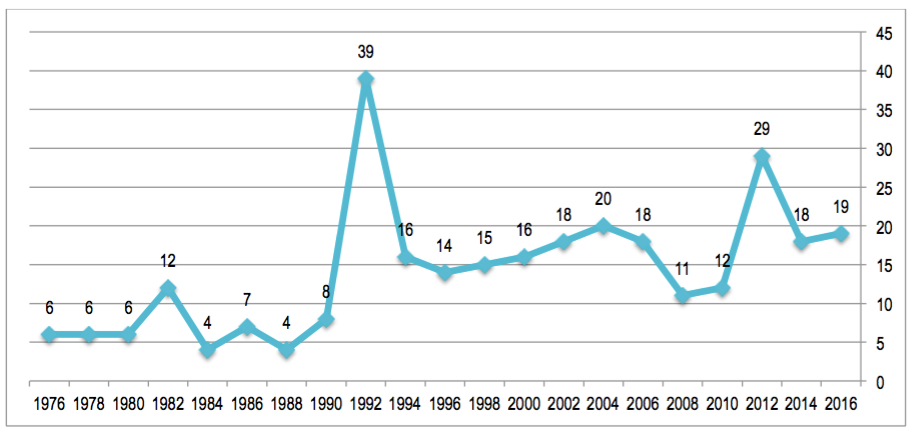
Total Women Candidates Filed for U.S. House by Party, 1976-2016
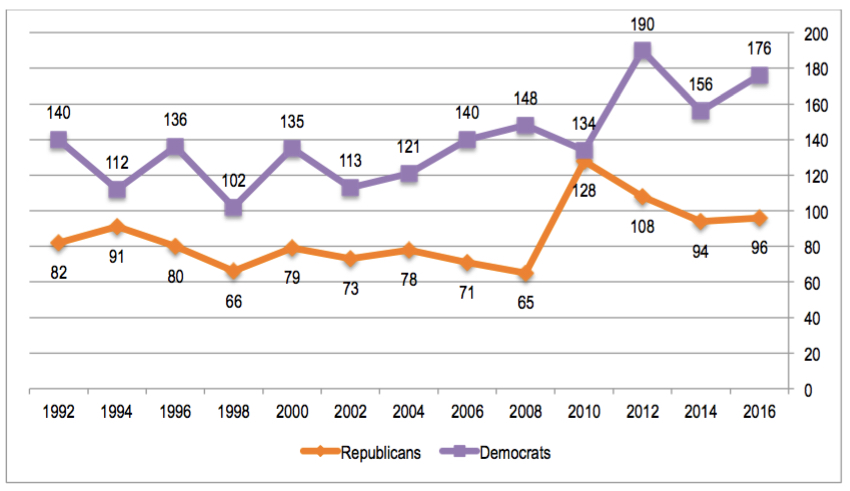
Total Women Nominees for U.S. House by Party, 1976-2016
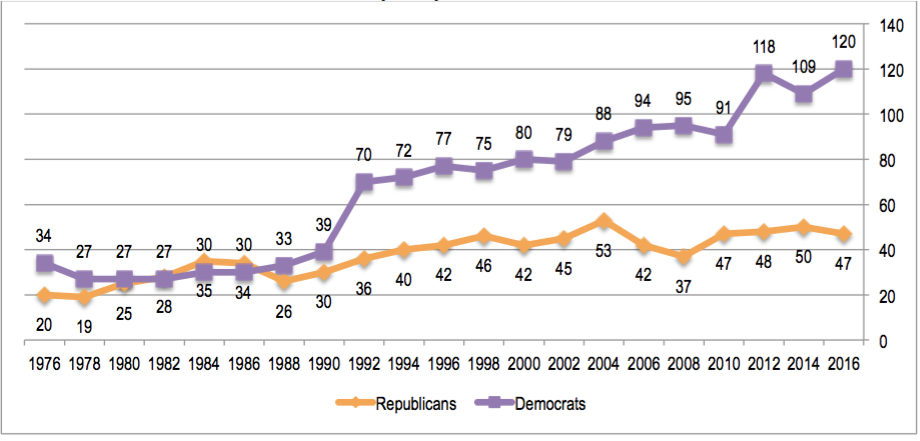
Women in the 115th Congress
It is likely that the total number of women serving in the U.S. House will rise in the 115th Congress from the 84 women members (62D, 22R) in the 114th Congress, but the size of that increase depends on how the most contentious races of this cycle break for women candidates. Importantly, there is a partisan disparity in the prospects for women’s congressional success this year.
While we know that eleven current women members (8D, 3R) are leaving because of retirements, primary losses, and bids for other offices, four women candidates (3D, 1R) are very likely to become new members of the 115th Congress, based on the most recent ratings from the Cook Political Report. Democratic women candidates are much better represented among the remaining prospects for the 115th freshman class. Another two Democratic women newcomers (2D) are rated as likely or leaning to win House seats this year. Finally, 10 possible new women members (9D, 1R) are competing in contests rated as toss-ups by the Cook Political Report as of this week, with only one Republican among them. Two of these women are competing against each other in the competitive race for the open seat in New York’s 22nd district. There are currently no women incumbents in races deemed as toss-ups or possible losses, though Republicans Mia Love (R-UT) and Barbara Comstock (R-VA) are in the most vulnerable (labeled “lean Republican” by Cook) races this year. Based on these numbers, the number of Republican women in the U.S. House will almost certainly decline from the 114th to the 115th Congress; including a win in a toss-up race for Republican candidate Claudia Tenney (NY-22), Republican women are favored to win 21 seats this year, down from the 22 currently serving in the U.S. House.
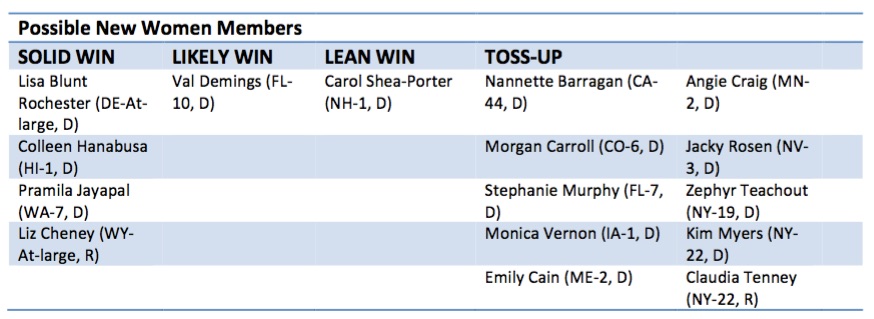
Four (4D) of the five (4D, 1R) non-incumbent women most favored to win House seats (in races deemed safe or likely wins for their party by Cook Political Report) are women of color. In fact, of the five open-seat races with women candidates deemed as solid or likely for their party’s success, four are women of color. They include two Black women (Val Demings [FL-10] and Lisa Blunt Rochester [DE-At-large]) and two Asian American women (former Representative Colleen Hanabusa [HI-1] and Pramila Jayapal [WA-7]). Jayapal who would become the first Indian American woman ever elected to the U.S. Congress. The only other woman candidate equally favored to become a freshman member of the 115th Congress is Republican Liz Cheney, running for Wyoming’s at-large seat.
In 2014, 12 new women (7D, 5R) were elected to the U.S. House of Representatives. If more than half of the toss-up races listed break in women candidates’ favor, we may meet or exceed that number this year. However, we are highly unlikely to match the 19 new women that were elected to the U.S. House of Representatives in 2012 or approach the size of the female freshman class we saw after the 1992 election, known as the “Year of the Woman.”
Women Members of the Freshman Class, U.S. House of Representatives, 1976-2014
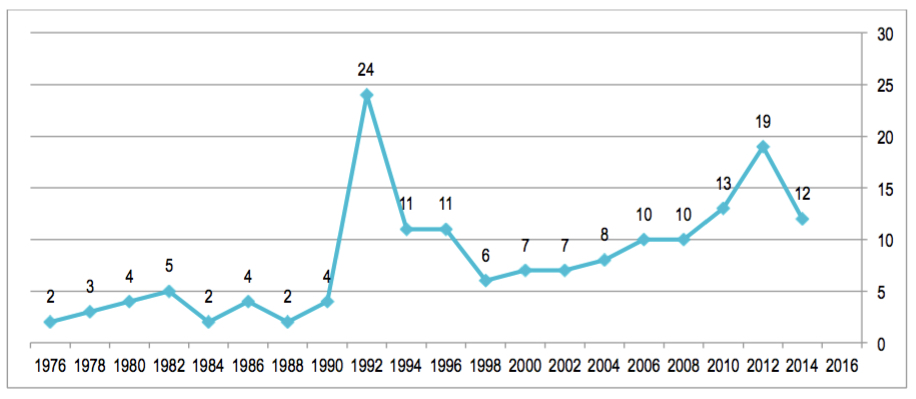
What to Watch on Election Day
In addition to tracking the numbers of women winning U.S. House seats on Election Day and closely monitoring the most competitive races with women running (see table above), we will be watching these races where women have the potential to make history:
- DE-At-large: Democrat Lisa Blunt Rochester, if elected, will be the first woman ever elected to Congress from Delaware. Delaware is one of just three states (along with MS and VT) that have never sent a woman to Congress. Rochester would also be the first person of color to represent Delaware in Washington, DC.
- IA-1: Democrat Monica Vernon, if elected, will be first woman elected to the U.S. House of Representatives from Iowa. She is challenging incumbent Rod Blum (R) in a contest currently rated as a toss-up. Senator Joni Ernst (R-IA) became the first woman ever elected to Congress from Iowa in 2014. Kim Weaver (D) is also competing for Iowa’s 4th Congressional District seat, a seat deemed solidly Republican.
- NH-1 and HI-1: Democrats Carol Shea-Porter (NH-1) and Colleen Hanabusa (HI-1) are favored to win congressional seats they formerly held. Shea-Porter has served three terms in the U.S. House, losing re-election in 2014. That year, Hanabusa ran for the U.S. Senate and lost after serving two terms in the U.S. House.
- NY-22: Republican Claudia Tenney and Democrat Kim Myers are in a tight race to win this open seat. This is the only woman-versus-woman House race rated as competitive this year. Fourteen other House races have two female nominees this year, and all four of Hawaii’s nominees for the state’s two House seats are women.
- WA-7: Democrat Pramila Jayapal, if elected, will be the first South Asian American woman ever elected to the U.S. Congress. She would also be the first woman of color to ever serve in Washington’s congressional delegation.
- WY-At-large: Republican Liz Cheney, if elected, will be the first woman elected to hold the same U.S. House seat that her father once held (1979-1989). Lisa Murkowski (R-AK) succeeded her father Frank in the U.S. Senate. Other women members – including Shelley Moore Capito (R-WV) and Nancy Pelosi (D-CA) have had fathers who have served in Congress before them, but not in the same seats.
Finally, while two states with no women currently serving in the U.S. House (Delaware and Iowa) have the potential to add women members to their 115th House delegations, Maryland, which currently has one woman House member and one woman Senator, is very likely to have no women in its congressional delegation come January 2017. Sixteen other states are unlikely to add women to their all-male U.S. House delegations in 2017: AK, AR, GA, ID, KY, LA, MS, MT, NE, ND, OK, PA, RI, SC, VT, and WV. Women are nominees in 8 of these 16 states, but they are all competing in races rated as solid or likely wins for the party of their opponent.


